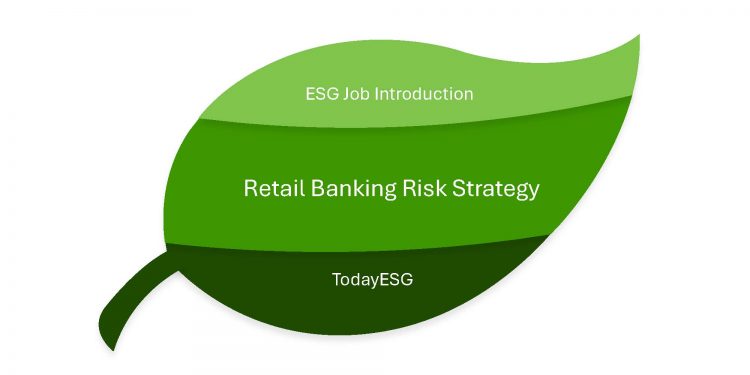The Impact of ESG on Retail Banking Risk Strategy
With the continuous development of the retail banking business, retail bank risk strategy position need to consider how sustainable risks affect bank investment and financing activities, and implement enterprise risk management (ERM) framework. This position requires close attention to the development of sustainable financial products (such as green deposits, green mortgage loans, and sustainable development loans), and determines key risk indicators (KRI).
Retail banking risk strategy position need to analyze the sustainable risks, and regularly update the bank’s risk tolerance and risk appetite, and pay attention to business activities and industry exclusion lists that are violated with sustainable goals. This position needs to work with other risk departments of the bank to ensure that sustainable risks are included in the overall risk framework. In addition, risk strategy positions also need to continuously track the changes in regulatory policies and industry standards, and consider the impact of these changes on banks.
Related Post: ESG Job Introduction: Retail Banking Risk Analytics
How to Apply ESG in Retail Banking Risk Strategy
Retail banking risk strategy position may apply ESG in the following tasks:
| Key Points | Tasks |
| Maintain Enterprise Risk Management framework | 1. Summarize key risk indicators (KRI) for sustainable risks, and apply these indicators to corporate risk management frameworks 2. Apply risk modeling and measurement technology, effectively analyze the sustainable risk of banks and sustainable risks faced by different business lines within the bank 3. Develop banks’ risk tolerance and risk appetite, including the exclusion list that contrary to the bank’s sustainable goals |
| Identify and implement controls for enterprise risks | 1. Understand how the changes in the sustainable regulatory policies affect the bank’s risk management framework, and communicate with relevant departments for required actions 2. Cooperate with other risk departments in the bank to formulate priorities of risk management |
| Implement ERM and consequence management activities | 1. Determine the business impact of negative sustainable incidents on the bank, and formulate a clear response method in combination with the bank’s sustainable goals 2. Put forward the mechanism to solve the gap in sustainability risk controls 3. Add sustainable risk discipline in cross -departmental business |
| Monitor risk exposure | 1. Recognize sustainable risks and formulate sustainable risk recognition procedures and methods 2. Use different sustainable risks and climatic scenarios for stress testing, review results and prepare relevant reports |
Retail banking risk strategy position will need to apply climate change management, natural capital management, sustainable development of non -financial industry, and sustainable risk management related skills.
Reference:
Monetary Authority of Singapore
Institute of Banking and Finance Singapore
Jobs Transformation Map – Sustainable Finance
Contact:todayesg@gmail.com








